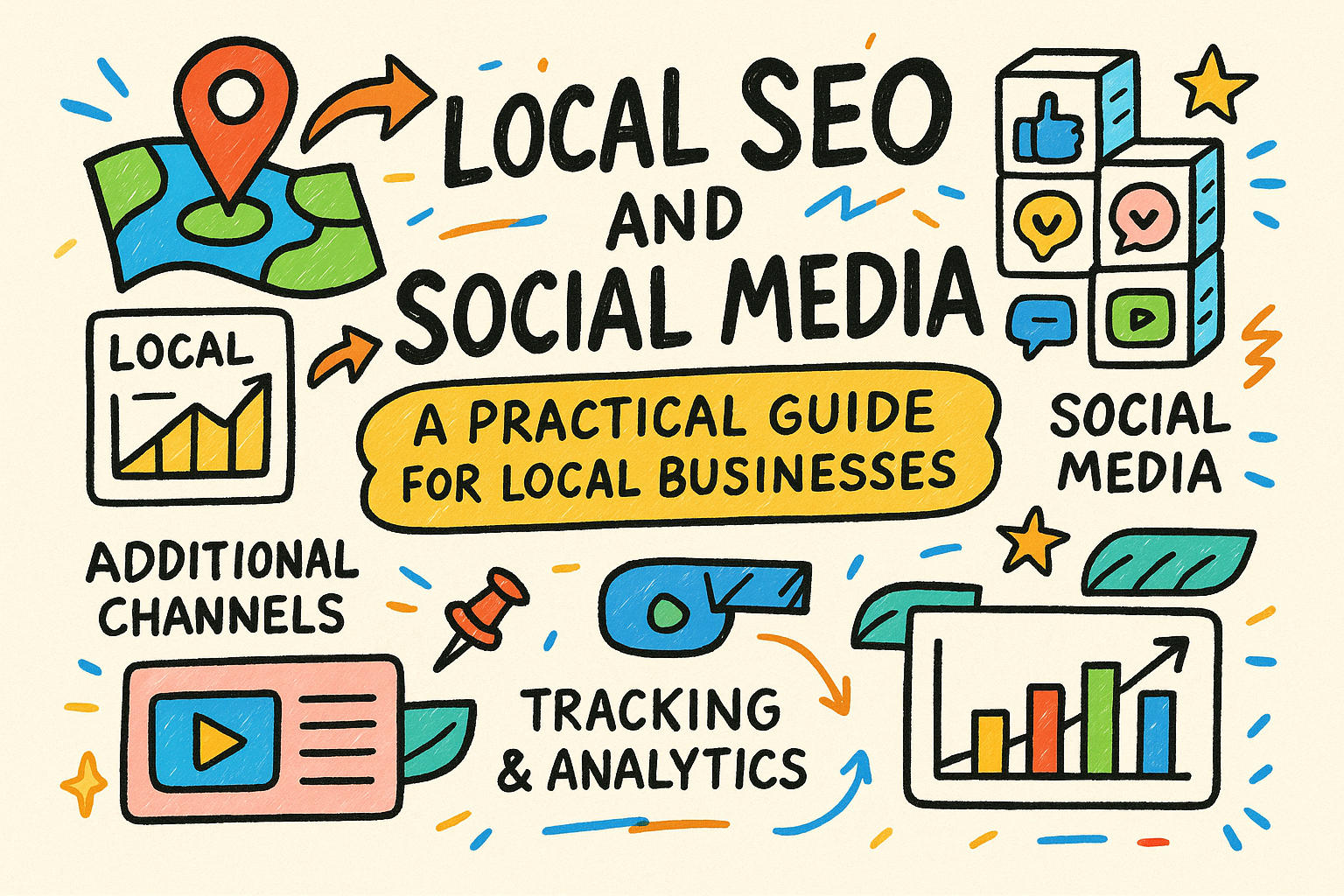Why Local SEO Matters
Local SEO positions your business at the top of “near me” searches and Map Packs, bringing motivated customers to your website and premises. When someone searches “bathroom installer London” or “nail salon near me”, effective optimisation delivers you the top spot.
Key Components of Local SEO
- Google Business Profile (GBP) Setup
- Claim and verify your profile immediately.
- Supply complete details: services offered, opening hours, attributes and professional photographs.
- Citation Building
- Maintain exact NAP (Name, Address, Phone number) consistency across all directories (Yelp, Bing Places, industry listings).
- Enrol in local citation sites and sector-specific directories.
- On-Page Optimisation
- Embed local keywords within title tags, meta descriptions, headings and body copy.
- Develop dedicated landing pages for each area you serve.
- Review Acquisition
- Invite satisfied clients to post reviews on Google, Facebook and specialist platforms.
- Reply swiftly and courteously to every review.
- Technical SEO Enhancements
- Apply LocalBusiness schema to clarify your services for search engines.
- Guarantee a responsive design and rapid page-load times.
Essential Local SEO Resources
‘How to Do Local SEO: Beginner’s Guide’ – Spark SEO
Step-by-step instructions from profile setup to citation management.
https://sparkseo.net/blog/how-to-do-local-seo-for-beginners
‘Local SEO: The Complete Guide’ – Ahrefs
Detailed coverage of citations, on-page tactics, review strategies and technical improvements.
https://ahrefs.com/blog/local-seo
‘A Comprehensive Guide to Local SEO’ – HubSpot
Techniques for optimising your Google Business Profile and refining local keyword research.
https://blog.hubspot.com/marketing/local-seo
‘SEO for Small Businesses: Everything You Need to Know’ – Investopedia
Practical advice tailored for small enterprises on profile management, on-site tweaks and performance tracking.
https://www.investopedia.com
Social Media Strategies for Local Impact
Social media showcases your expertise and fosters community trust. Customise content to match each platform’s strengths:
Additional Channels to Explore
Expand your reach and diversify content with these platforms:
Tracking & Analytics
Tracking and analytics empower you to measure performance, identify opportunities and refine your Local SEO and social media efforts for continual growth.
- Set Up Google Analytics for Local Insights
- Implement the latest Global Site Tag (gtag.js) or Google Tag Manager on every page.
- Create a dedicated “Local Traffic” segment by filtering users whose sessions began from your target towns and cities.
- Monitor key metrics: sessions, users, bounce rate, pages per session and average session duration for local segments.
- Use Google Search Console to Monitor Local Visibility
- Verify your site in Search Console and ensure your local landing pages are indexed.
- Track queries that include place names (e.g. “bathroom installer Brighton”) to see which terms drive clicks and impressions.
- Review the Performance report weekly to spot trends and opportunities for new content or on-page tweaks.
- Leverage Social Media Insights Dashboards
- On Facebook, use Page Insights to track reach, post engagement, page visits and actions (calls, messages, directions).
- On Instagram, switch to a Business or Creator account to access metrics on impressions, profile visits, website clicks and audience demographics.
- On LinkedIn, review analytics for your Company Page: article views, follower growth and engagement rates.
- Define Local-Focused KPIs
- Search-Driven Conversions: Contact form submissions or calls from local landing pages.
- Map Pack Impressions & Click-Throughs: Performance of your Google Business Profile.
- Review Growth: Number and quality of new reviews per month.
- Social Engagement Rate: (Likes + Comments + Shares) ÷ Followers, tracked per platform.
- Establish a Reporting Cadence
- Generate a concise monthly report combining Local SEO and social metrics.
- Highlight victories (e.g. increased Map Pack clicks) alongside action points (e.g. under-performing landing pages).
- Use visual aids—charts of organic traffic by location or social engagement trends—to inform strategy discussions.
This section gives you the foundation to measure success, justify investment and continuously refine your Local SEO and social media activity.
Bringing It All Together
- Review Your GBP and Website: Implement Spark SEO and Ahrefs best practices to secure a robust foundation.
- Build Citations & Gather Reviews: Track progress using Investopedia’s checklist for small businesses.
- Plan Monthly Content Calendars: Allocate templates and deadlines for Instagram, Facebook and LinkedIn.
- Measure & Expand: Assess engagement after three months and introduce Pinterest boards or short-form video if metrics support growth.
This combined Local SEO and social media approach drives higher search rankings and cultivates an engaged audience that converts into real projects and revenue.






Any thoughts?
Leave a comment